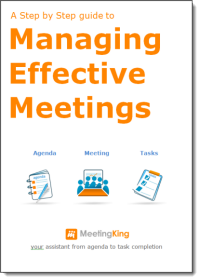
Business without meetings is like coffee without cream. It’s unimaginable! Nonetheless, not every meeting is necessary and having the right ingredients when preparing for it, will bring the desired result.
Let’s take a closer look at the fundamental points to be considered before scheduling a meeting. You can acquaint yourself with the first part here.
The Purpose of The Meeting
It’s essential to determine the reason behind arranging a meeting to appreciate its necessity. For example, does the project you are working on call for swapping ideas? Do you have an important development that changes the dynamics of the project moving forwards? If so, organizing a meeting would be a great idea.
However, a meeting will always require organization and time out of the day. It is often the case that brief communications that do not involve the entire team may benefit from a simple email or call between colleagues. By defining the purpose of your meeting you will save time.
The Status of The Project
Are you organizing a meeting about a new project or a project that has already started? If you are launching a new project, a meeting is pivotal. It’s crucial to determine responsibilities, the desired results, and deadlines to ensure that everyone is on the same wavelength before you start working.
On the other hand, if the project is already in progress and tasks have been delegated, attending a meeting might not be necessary. It may be sufficient to have meetings once every two weeks or share updates through emails or a virtual sticky note board.
The Desired Outcome
What do you want to achieve with this meeting? By knowing the goal that you are aiming for, you can determine if the meeting is necessary.
If your desired outcome is to collect information for a spreadsheet or a white paper, an email might suffice. However, if your objective is to generate ideas, define an action plan or receive input from multiple departments, a meeting might be required.
Planning Ahead of Time
When it comes to planning a meeting, there are two important things to keep in mind: the WHO and the WHAT.
First of all, you need to decide WHO should be invited to the meeting. Generally, it’s better to have a smaller number of attendees. You should only give invitations to the people who need to be there and whose contribution is relevant to the particular task.
Secondly, you should consider WHAT each participant should bring to the table. Perhaps you require specific information or a progress update on a recent project for the meeting. Make sure to acquire all necessary documents ahead of time to ensure that everything goes as planned. Also, make sure to designate a colleague to take meeting minutes so you have a record of decisions made, new tasks, and who is responsible for them.
The Meeting Agenda
A meeting is not a monologue, it is a dialogue that needs to be structured. You can save time and money by setting a clear, and concise meeting agenda that gives your team the clarity needed to achieve maximum synergy. Formulating a meeting agenda that you can share with your colleagues in advance can help with that.
An agenda sets the tone for the whole meeting, allowing every participant to know what to expect and to come prepared. It is a unique opportunity to open the discussion by establishing your intentions, goals, and vision for the task at hand.
Read how MeetingKing can help you with your agenda.
Keeping these tips in mind will help to determine if the meeting that you are about to schedule will be beneficial to your team. The meetings that you arrange will be more constructive, productive, and engaging.
___
The image above by rawpixel.com on Freepik


